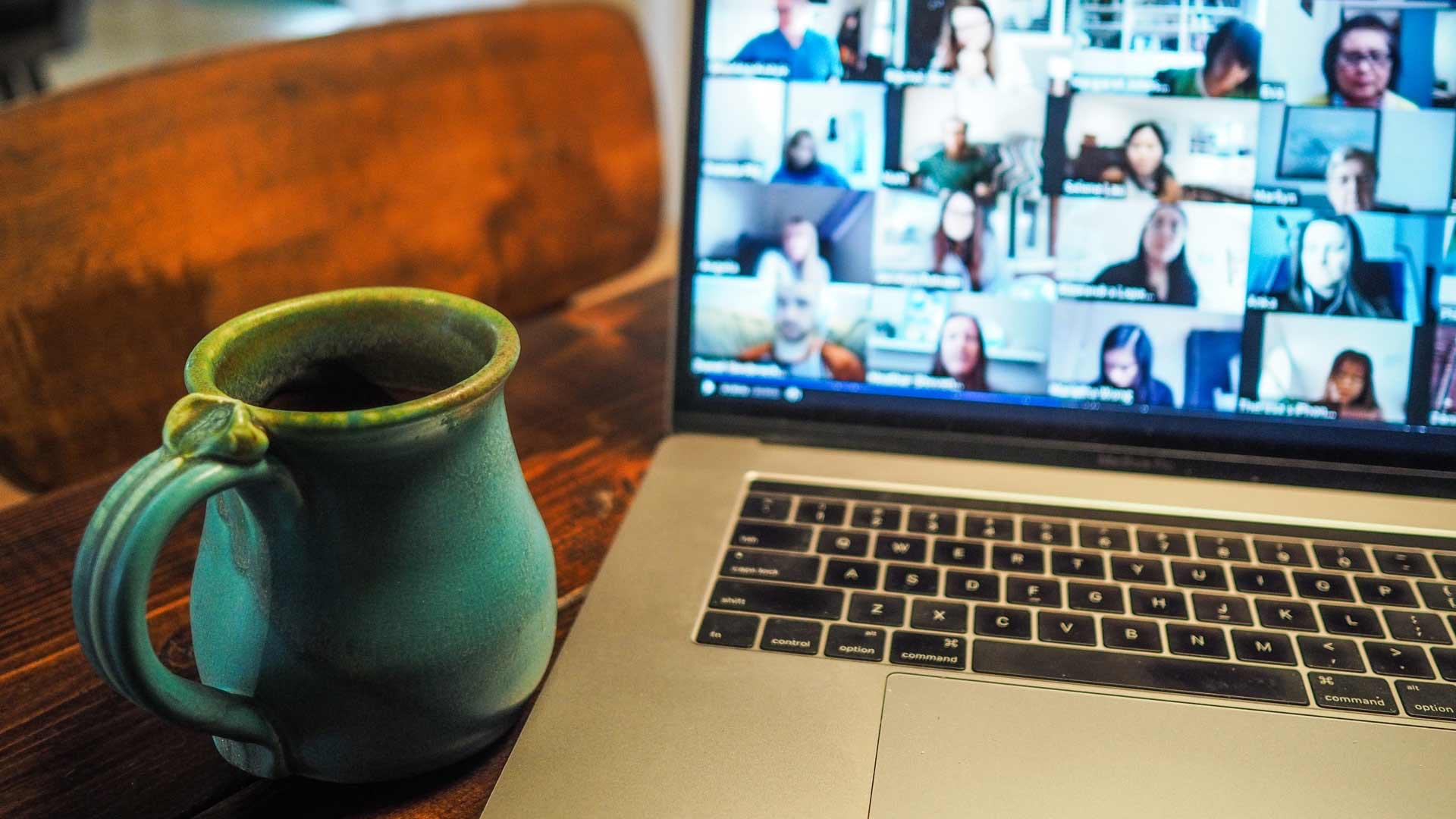If you’re in marketing, there’s a pretty good chance that you’ve been involved in at least one event in your career. And whether you’ve mostly done trade shows or conferences or even just a networking event here or there, the chances are pretty good that you didn’t nail it your first time out. Even if you’re a marketing genius, events are hard. It’s understandable.
On the positive side, now we’re all being thrust into that position. As, of course, the COVID-19 pandemic has changed much about our lives, that has included event management. Specifically, we haven’t been able to have events. But since it’s the 21st century, the fact that we are no longer allowed to gather a couple thousand people into an exhibit hall together hasn’t stopped us.
Events are going virtual. And it’s gone well enough so far that we doubt things are ever going to fully go back to the old normal. Virtual events are here to stay, so whether you have something planned for this fall or next winter, the chances are pretty good that you’ll need to deal with at least a virtual component.
We’re all figuring out how these virtual events are going to go. A guide would be helpful, so I spoke to some of my Element Three colleagues who have helped our clients take their planned in-person events to the digital realm. Here’s some of what they learned from our first forays into virtual events.
The more people involved, the greater the lift for everyone
It’s easy to think that bringing in a massive events team will make matters easier for everyone. But unfortunately, when it comes to a virtual event, in a lot of cases it ends up being a lot less “many hands make light work” and a lot more “too many cooks will spoil the broth.” And overextending on what you’re trying to promise—or to whom you’re promising it—can make things tough as well.
If you have more than one or two departments contributing content to your event, that means all that content (and all those content producers) has to be managed. If you have several stakeholders who all have to sign off on everything that’s going to be said, it’s going to take time to get that all done. If you’re targeting multiple time zones, or even multiple countries and languages, that takes time. Multiple webinar platforms? You guessed it. Time.
All of this also means more work for any outside help you’ve hired, whether that’s a marketing consultancy or a tech provider or just a person to help you run audio. This obviously can apply to in-person events as well, but for your virtual event, make sure you don’t forget: the more you try to cram in, the harder it is to make each piece fit.
Don’t vary production value within an event
When you go to an event, there is of course a minimum bar the presenters need to clear in terms of production value. But if the content’s amazing, it’s a lot easier to forgive a mediocre production. If, say, Simon Sinek or someone like that wants to use an old-school overhead projector, I doubt you’ll see any decrease in the size of his audience.
On the other hand, though, no matter the quality, you should do what you can to ensure the quality of production is more or less constant throughout your virtual event. If you’re constantly yo-yoing back and forth between lo-fi and highly produced presentations, or super casual and buttoned-up styles, your audience is going to get seasick. And while they might forgive a slightly more bare-bones production style, jarring transitions are only going to make those segments look worse—and potentially overshadow good content.
If a presenter isn’t familiar with virtual presenting, help them out. Do what you can to level the playing field between your most experienced and least experienced presenters.
Make sure the equipment matches the format
Always remember that the fact that this is a virtual event rather than an in-person event does not mean that you can skimp on the details. And depending on the format of the presentation, those details can be very different.
For example, let’s talk about equipment. If you’re simply doing a verbal presentation, you can theoretically get away with simply recording using the camera and microphone built into your computer. Remembering the previous point, though, it might be smarter to upgrade to a more sophisticated recording setup.
But if you’re not simply going to be recording yourself sitting in front of a bookshelf, you need to think through your needs. Are you going to do something like a product walkthrough or demonstration that requires you to move around? First of all, no matter how much you paid for it, you probably should not use your phone if the camera needs to move around or through a product. But even with a more expensive camera, you’re going to want to use a gimbal to ensure smooth movement, and you’re going to want to have a microphone for each person involved—don’t rely on an ambient microphone to do the job. In fact, most people will forgive bad visuals before they forgive bad audio.
In general, production planning is critical. Know ahead of time what you’re going to be doing, and figure out precisely what you need to make it work. Don’t just wing it. Get the right equipment and assistance in place to really shine.
Promotion matters
I’m going to guess that if you’ve held an in-person event before, you probably didn’t just cross your fingers and hope that people would show up. You promoted the event, you figured out who your audience was and you informed them that an event was, in fact, occurring, and that they should come. This is simple stuff.
Therefore, it’s an important thing to remember for your virtual event, obviously. But in addition, the fact that you’re doing everything online means you can experiment with how you’re going to promote. It’s a great opportunity to try out different platforms like organic social, boosted posts, LinkedIn messages, and more to drum up interest. You can target the precise audience you want for your event, and you don’t even necessarily have to worry about location—since it’s virtual, in theory it’s just as easy for someone from the other side of the world to attend as it is for someone from the other side of town. And since it’s virtual, if someone finds out about your event the evening before, they won’t have to feel left out due to travel concerns.
Plan ahead
On the other hand, simply because it’s a virtual event rather than in person doesn’t mean planning goes out the window. Sure, some of it’s simpler—you don’t have to rent a space, you don’t have to worry about driving directions or parking or people getting lost. You don’t have to fret that the guy with the projector will show up late, or that half of the catered lunch will go to the wrong venue.
A good event can be made great with a little extra effort. The more time you can devote to promotion, the better—two to four weeks is your sweet spot, but obviously to be ready to promote four weeks out you need to have already thought out the details long before that. Don’t assume that just because you don’t have to get a reservation at the convention center, that means you can wing it.
Make it more of a discussion
Typically, the audience participation portion of an in-person event can be somewhat fraught. You never know what someone’s going to say, or how nervous they’ll be to speak in front of a crowd of people, and things can really get off track. Worst of all is when people just start yelling out questions or, more tactfully but still annoyingly, raising their hand in the middle of a presentation. Nobody wants that.
In a virtual event, though, it’s so much simpler to easily curate and manage audience questions. There’s a number of different ways to do it. You can have a special segment at the end where participants can “join the call” and converse with the speaker. If that sounds like a lot of work, you can just use a chat function in your presentation software to allow participants to submit text questions, which either the presenter or an assistant can vet before answering them.
However you move to do it, allowing participants to ask questions makes the presentation feel more intimate, and it can help a presenter to cater to the interests and needs of those present. And the stage of a virtual event means that it can be done in a way that doesn’t disrupt the proceedings, or distract from the presenter’s own needs.
Use your data afterwards
One of the big questions after a large event is “what next?” How do you take the success from your awesome event and carry that through to provide real business results? When you’re running something in person, that question can be tough to answer. Sure, you probably have the email addresses people used to register, but once you’re through with your event, you’re probably not expecting much more than a courtesy “thank you for attending!” email—in other words, as a marketer it can be hard to leverage that paucity of data.
Here is where it’s really nice to be a marketer running a virtual event. If you play your cards right, you will have much, much more data about who’s attending, what they’re attending, and how interested they were in it. If you have multiple tracks, you can see how many people followed each ones. You can look at viewer stats for individual presentations and even dial down to the user level to see specifically what an individual is interested in to (potentially) cater to that later.
It’s also a lot easier to get people actively invested. In person, you can’t exactly click a giant “LEARN MORE” CTA under Simon Sinek’s face. But online, you can! You can get people interested in your other content, you can invite them to talk to a salesperson, and you can even get them signed up for your next event—all while you’re still in the midst of your current event.
An opportunity, not a struggle
As it turns out, shifting from in-person to virtual events may be a blessing in disguise. It’s easier to make them interactive and keep people interested and involved, rather than mainlining coffee by the after-lunch break. You’ll get more information about the people who are interested in you, and you’ll be able to use that information in more intelligent ways. And, as long as you think before you leap, it really won’t be all that difficult to go from the convention hall or meeting space you’re used to and thrive online instead.




